Through Ginhong’s collective years of manufacturing industrial mixers, we share our knowledge about High Shear Mixers to help you in your journey through production and manufacturing processes.
The mixing process is the heart of any manufacturing process. A high quality mixer produces not only better mixtures, emulsions, solutions and dispersions, but also greater ROI for the company.
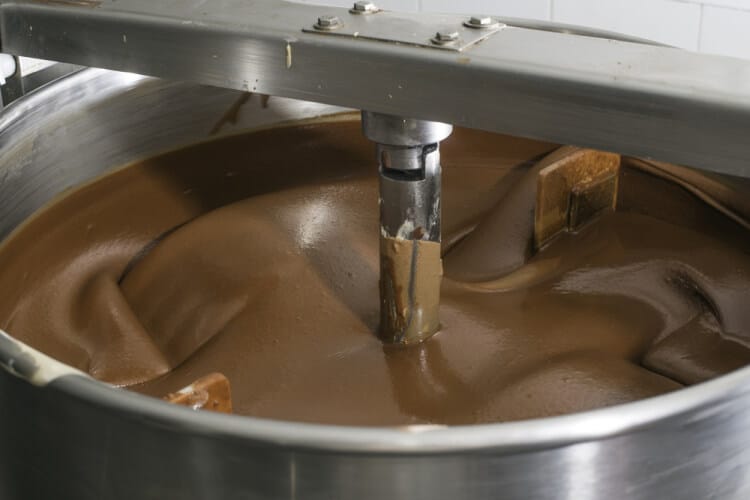
High shear mixers have gone a long way in manufacturing industries, serving the food, beverage, pharmaceutical, cosmetic and chemical companies with quality products. With the advent of newer mixing technologies, traditional propellers and turbines are now becoming obsolete. Mixing operations can not be as effective as using high shear mixers for most chemicals, plastics, adhesives, coatings, and other materials.
Today, in-line high shear homogenizers and batch mixers are earning the most popular seats in this competitive mixing arena. These high shear mixers process products more efficiently and, what’s even more appealing, is they cater to the requirements of clean manufacturing. With high shear mixers, mixing times are shorter, more uniform and more effective in gelling, solubilizing and attaining optimum features.
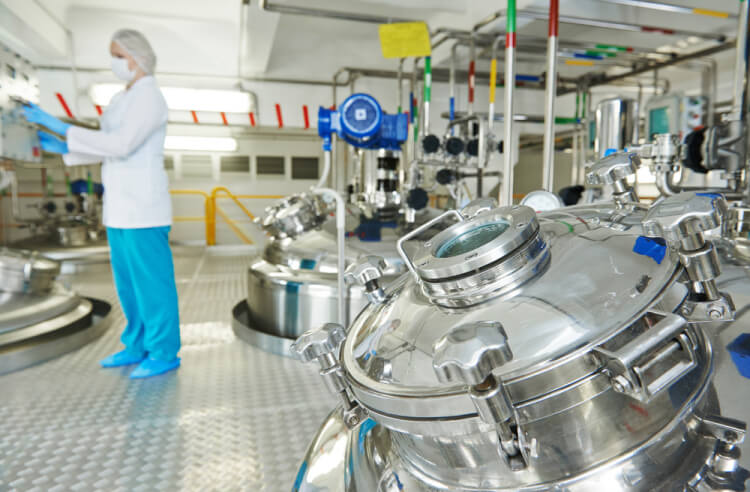
Ginhong has a variety of high shear mixers to suit different mixing requirements. We are an industrial mixer manufacturer for many years and we are happy to share our collective technical experience with you. If it is your first time to buy high shear mixers, you will learn in this guide some of the most basic and important aspects to consider before buying and choosing the right mixer.
Contents:
[lwptoc]
A Mixing Equipment is a huge investment that determines the success of your manufacturing process. If you’re thinking about buying a high shear mixer now, you should ask yourself the following questions first. These questions will guide you on choosing the right type of high shear mixer for your specific application.
1. What is your product?
Normally, products with viscosities ranging from 1-10,000 cps are processed using a High Shear Mixer. These industrial mixers handles large volumes of materials for the chemical, pharmaceutical, cosmetic, food and beverage industries.
High Shear Mixers are typically used for production of:
|
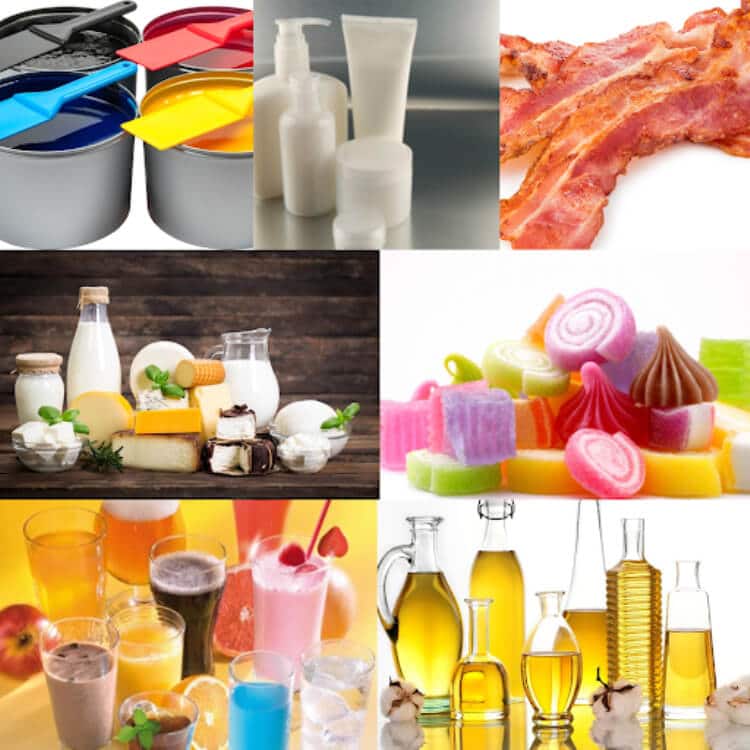 |
Industries served by Ginhong includes:
- Paint and lacquer industry
- Adhesive and sealant industry
- Building chemicals industry
- Chemical industry
- Pharmaceutical industry
- Food industry
2. What does your product need?
Today, most products requires a single mixer to perform blending, emulsifying, homogenizing and disintegration in one unit. The advantage of Ginhong mixers is that they manufacture these industrial mixers to adopt with global needs to perform multiple operations in one mixer. This versatility allows Ginhong high shear mixer to perform a wide variety of applications:
Blend
Product stratification is eliminated and a homogenous mix is produced through the blending operation of a Ginhong mixer, even if viscosities vary per material.
Gelling and solubilizing
Gums are dispersed rapidly resulting in a uniform mixture free from agglomerates.
Disintegration
High shear rotor/stator assemblies can disperse different materials with varying viscosities in one unit operation.
Emulsifying and homogenizing
A Ginhong high shear head can emulsify two or three unlike products (water+oil) from 0.5 to 5 microns.
Particle size reduction
High Shear disintegrator can mill solid products to a uniform mixture.
3. How to size your mixing equipment
Knowing your desired throughput a day gives you an idea what high shear mixer capacity you should buy and how many equipment you need for your manufacturing plant.
For instance you need to produce 300,000 – 320,000 bottles of 300 mL lotion per day. Your plant would operate for 16 hours a day (2 shifts, 8 hours per shift).

- Mixing time + residence time for lotion for this scenario is 10 min/batch.
Sizing your mixer capacity:
For example, if you want to product hand sanitizer
No. of bottles per hour =320,000 bottles/hr16 hours= 20,000 bottles/hr
Volume per hour = 20,000 bottles/hr x 0.3L/bottle = 6,000 L/hr = 100 L/min
Volume per batch = 100 L/min x 10 min/batch = 1,000 L/batch
Choosing a mixer:
- One (1) – 1000 L High Shear Mixer or,
- Two (2) – 500 L High Shear Mixer
There are many factors to weigh-in such as the efficiency of each machine, allowance for downtimes, duration of mixing and material transport and supply. The example presented above is for you to have a tip on how you can size your machine after weighing all the factors. You may have a meeting with your financial team and engineer on how you can account for other factors.
4. Do you need a customized high shear mixer?
There are instances that you would need a custom-made high shear mixer to suit your needs. We can do this for you depending on what you specifically need for your products.
Special installations can be accomodated to perform specific tasks such as extra heating, cooling or milling operations. Determination of what needs to be done for your product can be determined by test results from our lab mixers.
There are also cases that our clients requests for customized control panels. Other times, customers only want a heating phase tank without the water phase. We also get a lot of requests for size and shape customization.
5. Are you prepared for the upfront cost?
Like any capital costs, buying a high shear mixing unit will mostly depend on your processing needs and application. When you purchase a high shear mixer from a quality manufacturer in China, you can expect a reasonable price but the returns are overwhelming.
These advantages may reflect over the years of using Ginhong mixers as our company produces high quality high shear mixers that shortens mixing time, improves yield, increases capacities and promotes less energy consumption which reduces maintenance costs.

You may also expect that since our main factory is located in China, materials and manufacturing process are lower in cost so we can produce excellent, international standard high shear mixers with high-grade, sanitary stainless steel. This is one of our main advantages over global competitors.
Is a High Shear Mixer Your Best Option for Your Mixing Application?
When choosing the best industrial mixer for your application, you have to consider a lot of technical and financial items. This can be a daunting task, but the end results for your business is rewarding. A good advice is: do not rely on instinct. Moreover, you cannot solely depend on the recommendation of your industrial mixer supplier no matter how sincere the motive is. You have to know if your investment for a mixer is worth its underlying features.
Below you will find some of the essential things you need to consider when selecting a high shear mixer:
- Rotor tip speed;
- Initial size of sample;
- Viscosity of fluid;
- Processing time ;
- Flow rate;
- Volume of materials and concentration of sample;
- Positioning and type of rotor-stator.
And you should also ask these questions:
- Can the mixer work at the speed and shear rate the product needs to produce its optimum rheological features?
- Can it blend products at high shear to form grinds?
- What is the rotor size, speed and horsepower needed to reasonably carry out pre-mixing at high-shear rates?
Knowing the Capabilities of High Shear Mixers
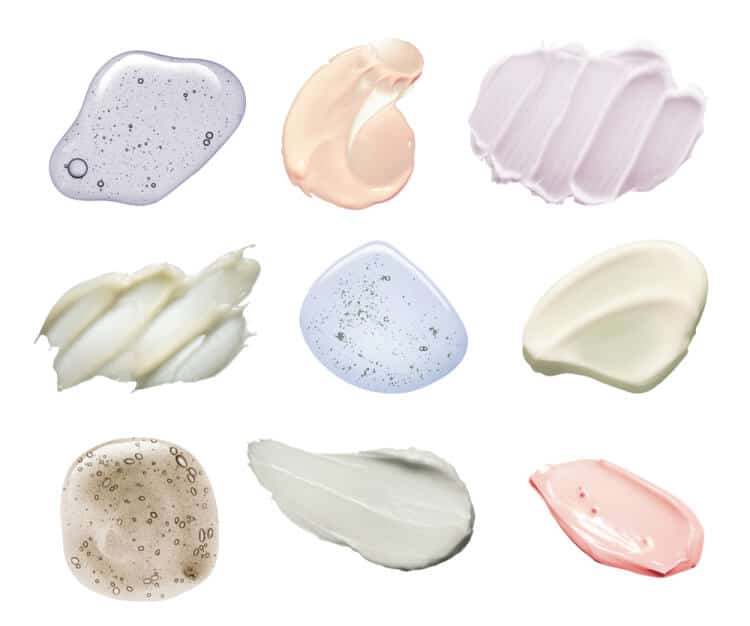
The most effective application of High-shear mixers is producing emulsified and homogenized mixtures of two or more immiscible liquids. Powder-liquid mixing or producing suspension is also a great way of utilizing your high shear mixer. You can also utilize this type of mixer in creating dispersions of gas and liquid to form lyosols. A high shear action can also produce fine granules.
Mounting Assemblies and Mixer Modules
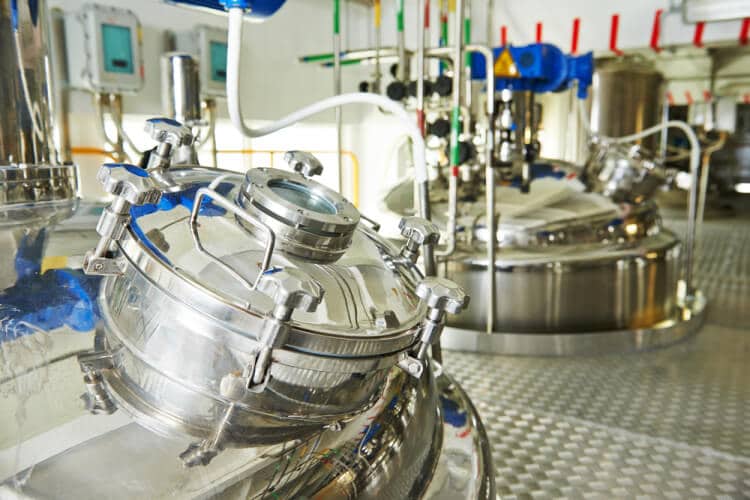
One of the advantages of picking Ginhong as your High Shear Mixer supplier is you can choose from a variety of well-engineered and intricately designed mixer mounting assemblies and modules. Each of the mixing units are manufactured to cater varying mixing needs and processes. Some are designed for high viscous mixing while others are made for simple processes.
Multi-Shaft Mixer Assemblies with High Shear Rotor/Stator Homogenizer
For high viscosity mixing applications, we designed a line of multi-shaft mixers equipped with a high shear rotor/stator homogenizer in addition to the anchor agitator and disperser. This set of assembly completes mixing, emulsification, dispersion and homogenization in just one unit and is used in the production of very viscous products such as adhesives, sealants, clays, slurries, toothpaste and many more.
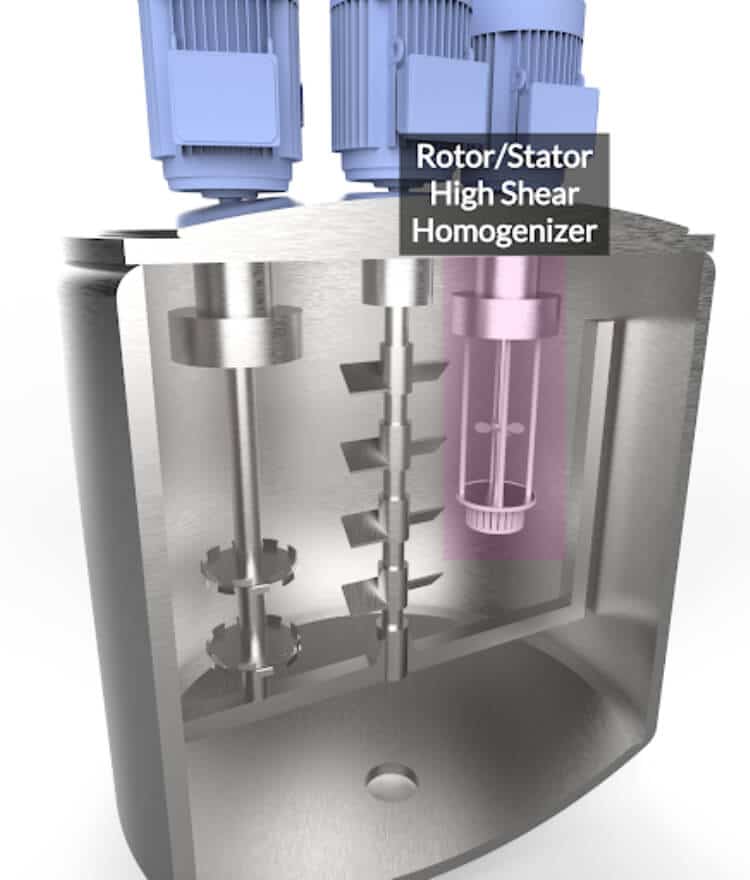
| Impeller Assembly | Viscosity limit | Speed range |
| Anchor Agitator | 750,000-1,000,000 cps | 3-200 RPM |
| Disperser Impeller | 50,000 cps limit | 600-1200 RPM |
| High Shear rotor/stator homogenizer | 1-10,000 cps limit | 4000-18000 RPM |
In-line Rotor/Stator Mixing Assembly
In-line homogenizers are installed directly in the production line allowing continuous flow of batches. It is usually found in industrial manufacturing plants or large-scale production systems. Our In-line mixing assembly is sized according to Ginhong Lab High Shear Mixer. The assembly consists of a top-entry tank and an in-line homogenizer that can be easily installed near the vessel.
In-line homogenizers performs like a positive displacement pump, wherein the materials are continuously processed by centrifugal action of the rotor/stator assembly. One of the best things about an in-line mixer is that it requires less effort in mixing large volumes of materials as compared with batch mixers. It can easily handle a 10,000 L tank like how it handles a 1,000 L batch. Installation is also much easier as valves are simple and you can instantly change one tank to another.
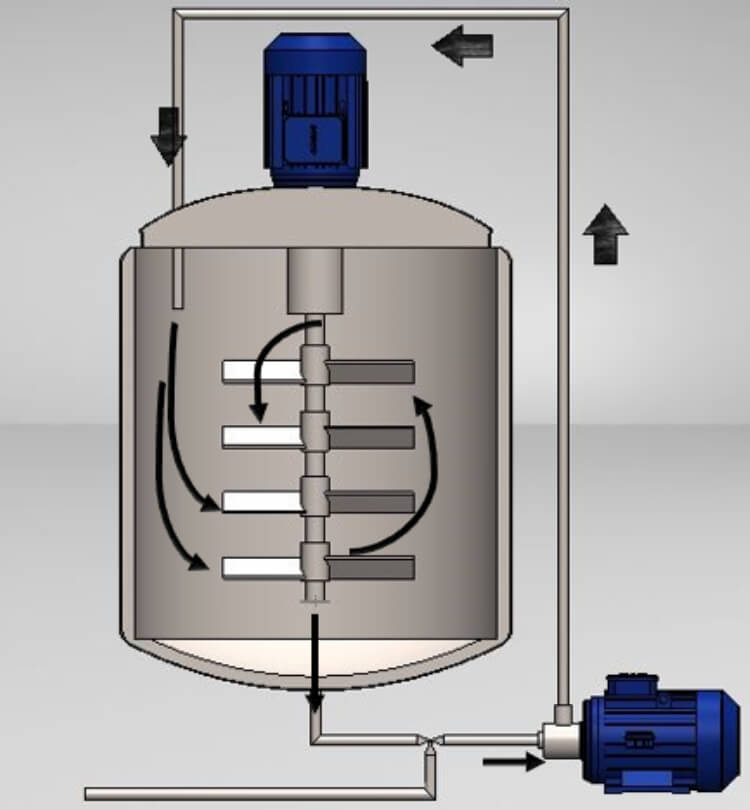
Bottom Entry Homogenizers
Our High Shear Bottom Entry mixers are designed to be installed at the bottom of the mixing vessel. This type of high shear mixer is more commonly utilized for viscous materials. The mixer is equipped with a slow speed anchor stirrer with scraper that facilitates mixing and proper distribution of ingredients. The scraper prevents materials from sticking to the walls.
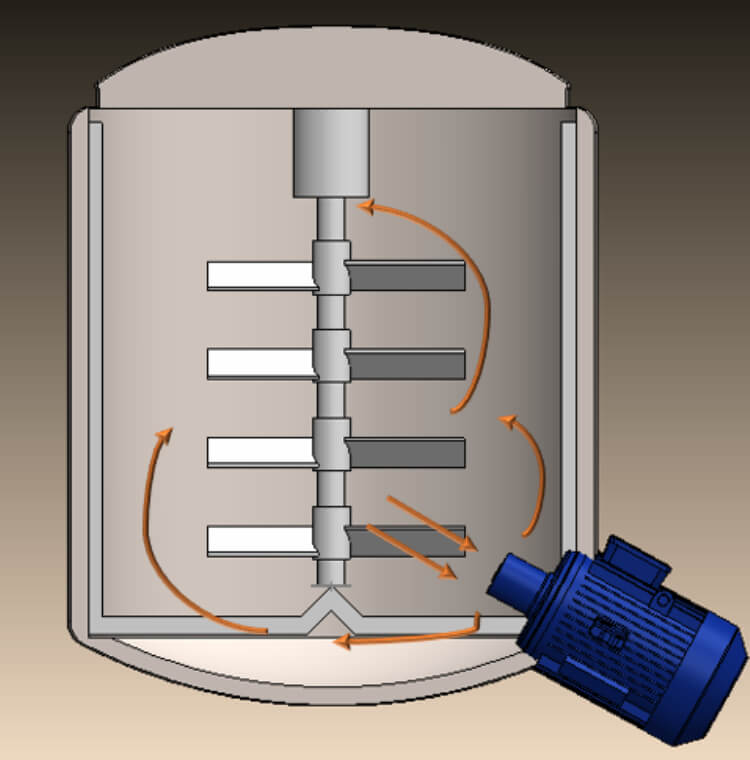
Industries with high viscosity requirements for pharmaceutical, food and cosmetic products are ideal for high shear bottom entry mixers. These mixers can also be used on low-viscous products and for wetting powders. Bottom Entry mixers can also be used by themselves on low viscosity products and to wet out powders.
High Shear Powder Inductor Mixer
High shear powder-liquid mixer is an inline rotor/stator mixer designed for powder induction. You can easily mix bulk powders with liquid semi-continuously for 1.5m³/h to 130m³/h. Powder incorporation is made convenient with its vacuum pump and funnel hopper and its floor-level configuration.
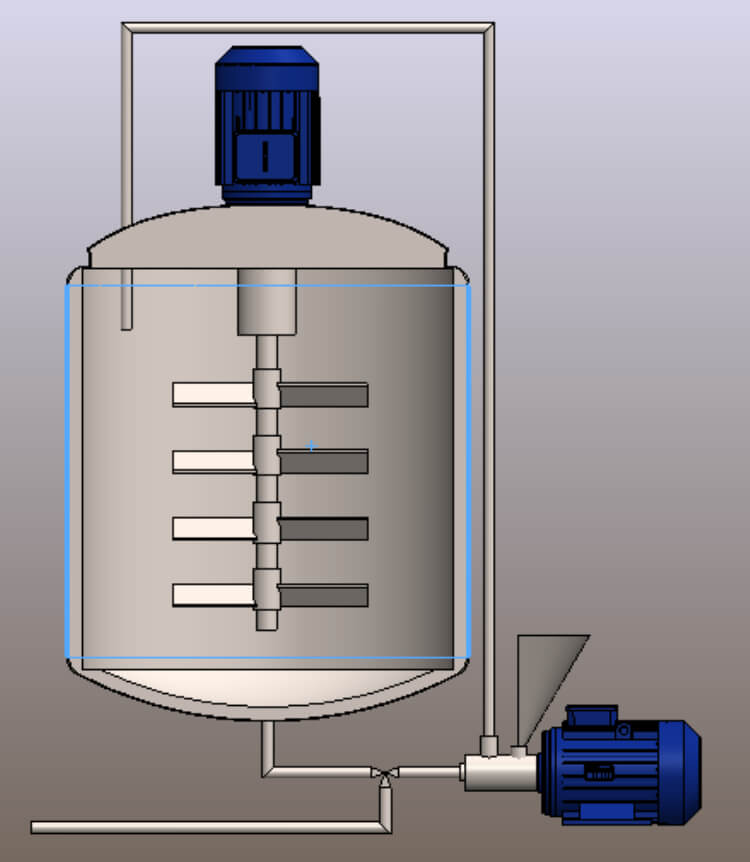
Batch High Shear Mixer
A batch high shear mixer is used to mix, emulsify, homogenize and dissolve products in a per batch case. The homogenizer shaft is mounted vertically at the center of the mixing vessel. This type of high speed mixer can have a shorter processing time than the In-line mixer. That is why batch mixers are used in large manufacturing plants to process bulk materials at a shorter time.
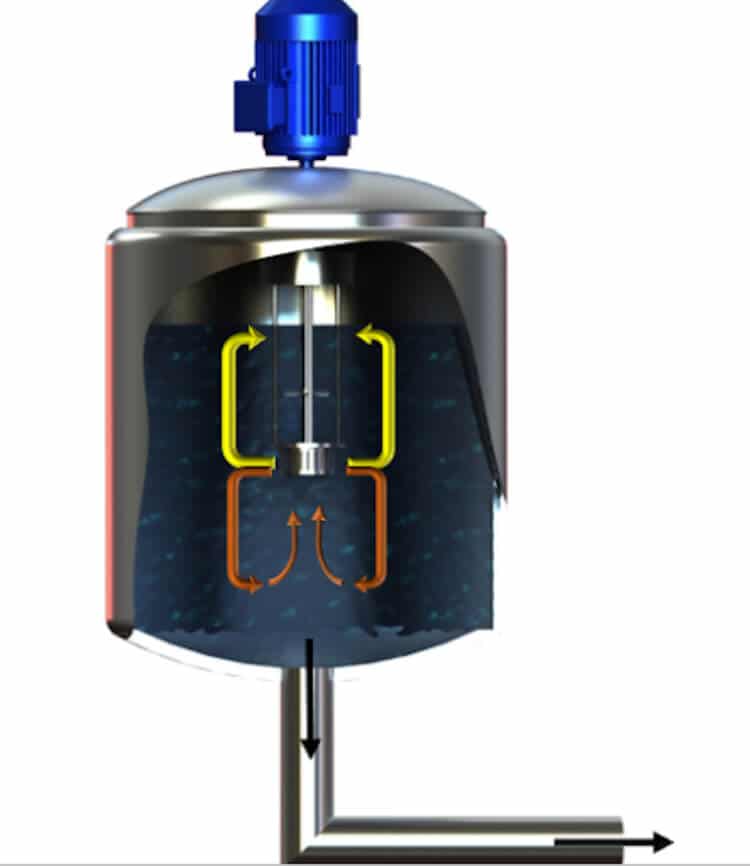
Laboratory Scale High Shear Mixer
Ginhong has laboratory scale high shear homogenizers with capacities from 0.5L to 15L and a speed of 6000 RPM. These laboratory high shear mixers are the exact industrial high shear mixer, scaled down to meet R&D, testing, QA analysis and small scale production needs. Lab mixers are used to emulsify, disintegrate, homogenize and deagglomerate products on a smaller scale.
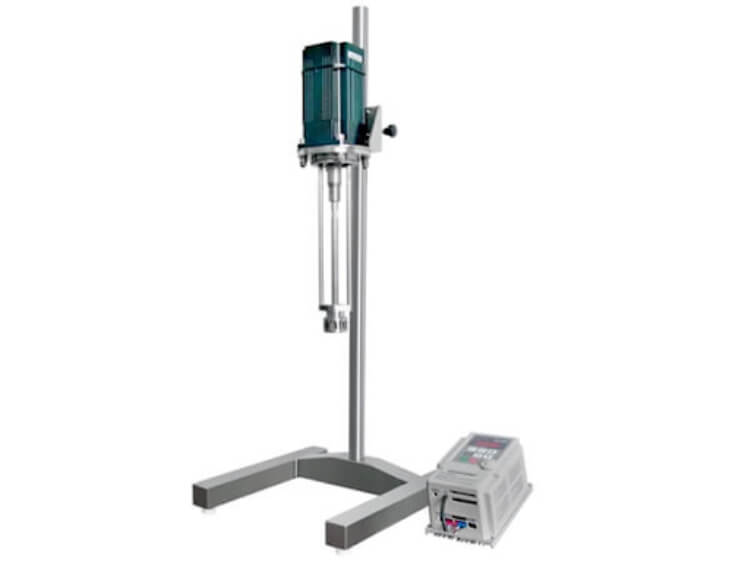
Construction of High Shear Mixers
In this section, we will discuss the most suitable materials for manufacturing high quality high shear homogenizers.
Materials
A high quality mixer is constructed with a stainless steel tank material and all the parts are compliant with cGMP regulations. One of the greatest things about Stainless steel is that it has a high strength-to-weight ratio which makes it light for its high strength capability. It is also notable for being resistive to corrosion so highly acidic ingredients will not affect the properties of the metal.
If you desire a clean and rust-free operation for many years with less equipment maintenance and downtimes, choose a stainless steel rotor-stator high shear mixer. You may opt other metal options such as iron but it simply can’t compete with the overwhelming advantages of stainless steel.
For highly abrasive ingredients, Ginhong adds a wear-protective coating on the tank and contact parts to further enhance its resistance.
Options
You can also request the manufacturer to custom-make your mixer according to what your product needs.
- Options for top-entry or bottom-entry mixer configuration.
- Options for vacuum or hydraulic lift system or both.
- Options for height-adjustment or larger vessel designs.
- Options for heating and cooling system.
- Addition of extra load cells.
- Design for a specialized pressure vessel for varying steam pressures.
- Options for explosion proof motors and electrics.
Fluid Shear
A high shear mixer facilitates high fluid shear inside the vessel to emulsify and homogenize materials. Materials undergo hydraulic shear when there is a difference in velocity of one area to another. To put it simply, the rotary action of the homogenizer imparts energy to the products. As the product passes through the stator, it undergoes high shear stress.
Fluid shear or hydraulic shear is a function of the tip speed of the rotor and space between a stator and rotor such as shown in the following equation:
Rotor Speed (m/s)=RPM x x rotor diameter60
This illustrates that doubling the size of the rotor means that the mixer should run at half of its speed. This principle can be used when sizing a laboratory scale mixer to an industrial mixer.
Fluid Viscosity
As far as high shear mixers go, it can only accommodate mixtures with typical fluid viscosities of up to only 10,000 cps. This also depends on the mixtures’ ability to decrease in viscosity as shear increases like in non-newtonian fluids. When you use an auxiliary pump, you can process ingredients with higher viscosities than 10,000cps.
With that being said, fluid viscosity is an important parameter to consider when it comes to selecting the right type of mixer. Certain types of fluids perform differently when you mix it. Some fluids would thicken as you mix, while others remain at the same viscosity. You need to determine the behavior of the fluid you will use.
Here are some of the most common kinds of liquids.
Pseudoplastic Liquids: increase in shear rate, viscosity also increases. Some examples would include latex, paints and gels.
Dilatant Liquids: Increase in shear rate increases viscosity of dilatant liquids. Candies, slurries and clays are examples of dilatant liquids.
Newtonian Liquids: Viscosity of the fluid remains as mixing increases. Water and mineral oils are perfect examples.
Thixotropic Liquids: This type of liquid decreases in viscosity as you agitate it. Some examples include peanut butter and tars.
Speed/RPM
This type of mixer can run up to 3000 RPM to facilitate turbulent flow, high shearing action for efficient homogenization and emulsification of products.
Torque
This is the force needed to drive the ingredients through the rotation of the shaft of the motor. The torque depends on the viscosity of the material and its behavior so you need to determine them first.
Power and Flow
This is the actual power rating of the motor in which the high shear mixer needs and is determined by the Torque (N-m) capacity and Speed (RPM) of the shaft.
HP = 4.687TN60
Motor
It is common that agitator motors are electric motors but some use hydraulic motors for small batch capacity applications.
To solve overhung loads and stresses that may break off the shaft, heavy-duty bearings can be used.
Rotor and Stator Assembly
Ginhong manufactures a complete range of rotor-stator workheads for high shear mixers. Choosing which type of workhead performs best with your product can do better with the mixing, dissolving, dispersing and particle size reduction.
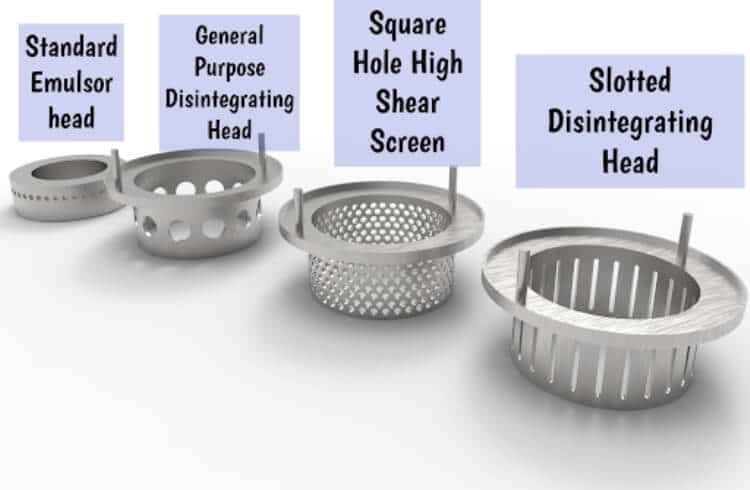
ZX Inline Homogenizer
Suitable for continuous mixing of large volume products for fast production
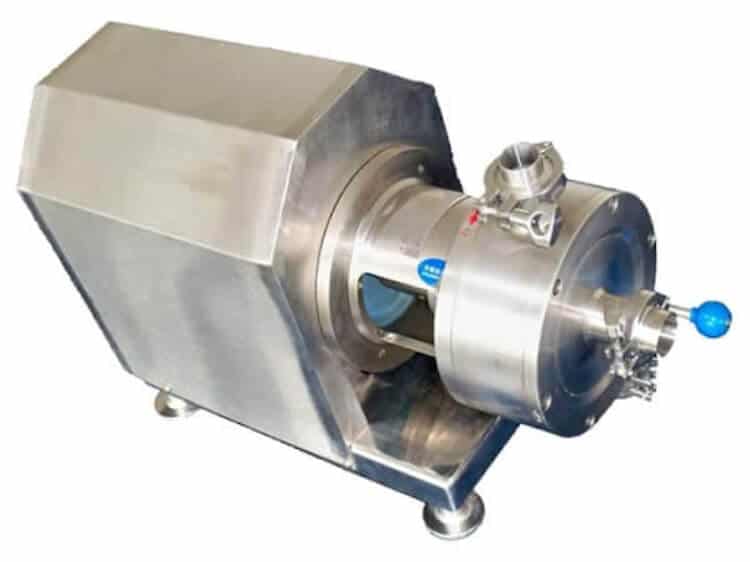
ZX in-line high shear mixer or in-line pump is Ginhong’s line of in-line rotor-stator mixing equipment. This mixing device is the heart of our RB Vacuum Emulsifier Mixer used in continuous mixing of creams, ointments, lotions and many emulsions in the pharmaceutical, chemical, food and cosmetic industries.
Specifications:
- Size ranges from 2.2 KW to 132 KW with up to 3,000 RPM speed.
- Flow rates ranging from 2 m³/h to 130 m³/h.
- Nominal diameter (DN) for Inlet and outlet of pump ranging from 40/32mm to 125/100mm, respectively.
Key Features
- Interchangeable workheads.
- Portable inline mixer with castor wheels and handrail.
- Control panel with frequency inverter for adjusting mixing speed.
- All contact parts are made of SS316L/304.
- The self-pumping in line high shear mixer also works as a transfer pump for discharging finished product.
- Work with different manufacturing vessels.
- Bypassing is not possible.
Mixing Process
- The Rotor inside the stator stimulates a high-speed rotation which forces the materials into the workhead or rotor/stator assembly.
- The action of the centrifugal force pushes the materials towards the periphery of the workhead that eventually leads to particle size reduction. The materials are also grinded and crushed in the gap between the rotor blades and inner surface of the stator.
- A powerful hydraulic shear follows as the ingredients are forced out of the slots on the stator at a high velocity. The process continues with unprocessed materials being continually drawn towards the workhead and being crushed, grinded and homogenized.
Pump Recirculation Mixing Configuration
One of the most popular configurations of an inline mixer is through the recirculation method. Here the product is continuously processed from top to bottom at an efficient way.
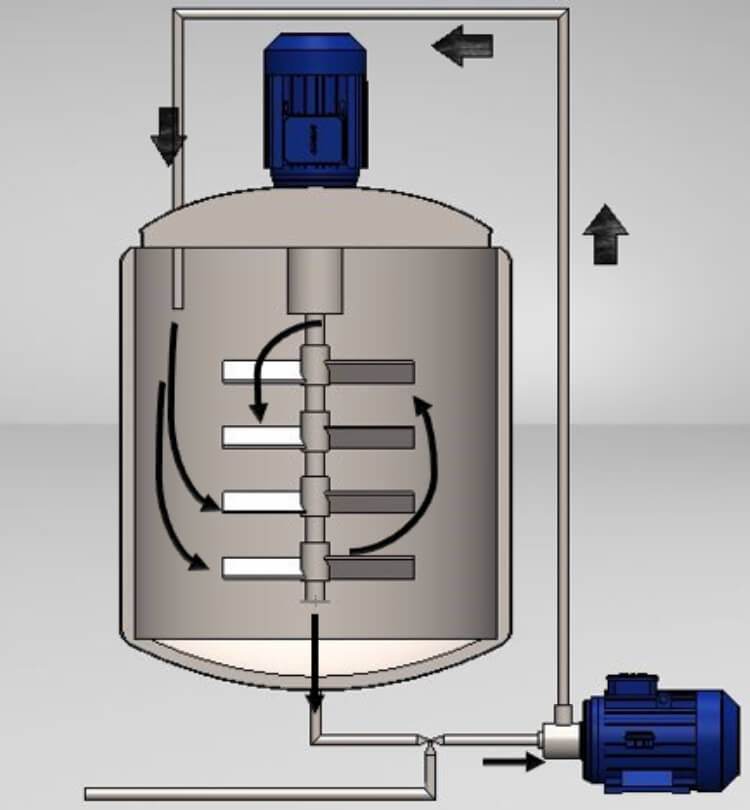
Sanitary Pump Options
Ginhong carries two types of sanitary pumps you can choose from to cover industrial, scientific and sanitary applications. They are capable of metering, processing and delivering products such as food, colloids, powders and agricultural materials in a mixing system with utmost cleanliness and reliability.
- self -priming with gentle pumping action which minimizes product degradation.
- suitable for liquids with viscosities between 5,000-100,000 cps.
- For large products such as cherries, fruits, etc.
- offer reversible flows and can operate dry for long periods of time.
- Output is constant and continuous as it is independent of changes in process pressure
-
- Suitable for low viscosity products such as water, solvents, organics, oils, acids, bases and any thin liquids in chemical, pharmaceutical, food, agricultural and domestic applications.
JX batch high shear homogenizer
Suitable batch productions ranging from small to large capacities for accurate control of product quality
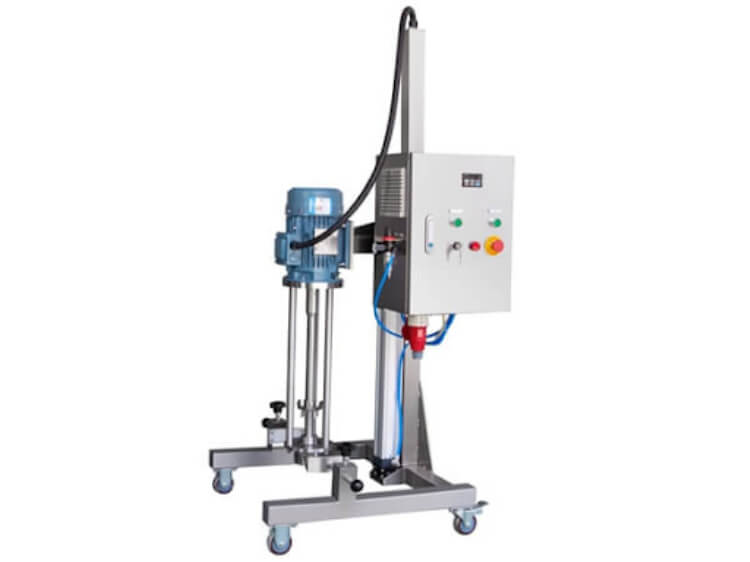
JX batch high shear homogenizer is a top entry high shear mixer for the production of viscous cream and emulsions in the cosmetic, pharmaceutical, food and chemical industries. It’s usually used in a multi shaft mixer for homogenization.
This high shear mixer is composed of a four-blade rotor which rotates at a high speed with a stationary stator. It effectively shears particles with optimum particle size reduction and easy dissolution of products are produced.
Specifications
- Working capacity from 1.5kw to 75kw;
- Batch capacities from 5L to 10,000L at 3000 RPM;
Key Features
- Suitable for cream and emulsions of 20,000~80,000cps viscosity;
- Suitable for batch process with high efficiency;
- Pneumatic or hydraulic lifting system for easy cleaning and maintenance;
- Eliminate agglomerates and fish eyes.
Mixing Process
- The materials are charged through a top-entry tank.
- The Rotor inside the stator stimulates a high-speed rotation which forces the materials into the workhead or rotor/stator assembly.
- The action of the centrifugal force pushes the materials towards the periphery of the workhead that eventually leads to particle size reduction. The materials are also grinded and crushed in the gap between the rotor blades and inner surface of the stator.
- A powerful hydraulic shear follows as the ingredients are forced out of the slots on the stator at a high velocity. The process continues with unprocessed materials being continually drawn towards the workhead and being crushed, grinded and homogenized.
DX Bottom Entry Homogenizer
Suitable for high viscosity pharmaceutical, cosmetic and food products
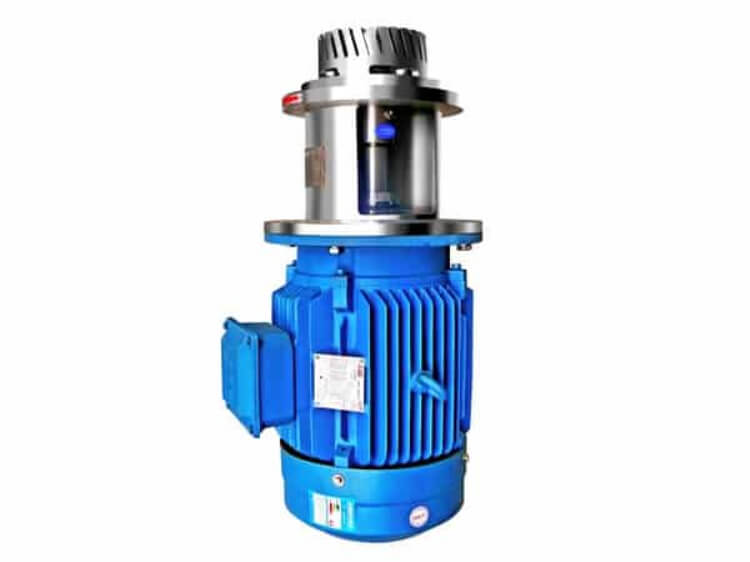
Ginhong’s bottom entry mixer is designed to be installed at the bottom of the mixing tank. This type of high shear mixer is more commonly utilized for viscous materials. The mixer is equipped with a slow speed anchor stirrer with scraper that facilitates mixing and proper distribution of ingredients. The scraper prevents materials from sticking to the walls.
Specifications
- Batch capacities from 5L to 10,000L at 3000 RPM;
- Working capacity from 1.5kw to 75kw;
Key Features
- Suitable for batch process with high efficiency;
- Pneumatic or hydraulic lifting system for easy cleaning and maintenance;
- Eliminate agglomerates and fish eyes.
Mixing Process
- The Rotor inside the stator stimulates a high-speed rotation which forces the materials into the workhead or rotor/stator assembly.
- The action of the centrifugal force pushes the materials towards the periphery of the workhead that eventually leads to particle size reduction. The materials are also grinded and crushed in the gap between the rotor blades and inner surface of the stator.
- A powerful hydraulic shear follows as the ingredients are forced out of the slots on the stator at a high velocity. The process continues with unprocessed materials being continually drawn towards the workhead and being crushed, grinded and homogenized.
SF Power Liquid Mixer
Suitable for complete dispersion and uniform blending of powder and liquids

SF power liquid mixer is a powder induction system for the mixing and dispersion of powder in liquid in the cosmetic, pharmaceutical, food and chemical industries. It’s similar as other inline homogenizers which are usually used in RB vacuum emulsifier mixers.
Specification
- Working capacity from 1.5m³/h to 130m³/h;
- Size ranges from 2.2 KW to 132 KW with up to 3,000 RPM speed.
- Nominal diameter (DN) for Inlet and outlet of pump ranging from 40/32mm to 125/100mm, respectively.
Key Features
- Suitable for higher temperature requirements;
- Suitable for slightly viscous materials such as gums or thickeners;
- Produces minimum aeration;
- Free from agglomerates and fish-eyes;
- Construction is modular with a wide range of options to suit a variety of applications and batch sizes;
- Minimum power requirement.
- Best ergonomic design.
- Easy to clean.
Process
- The mixer recirculates the liquid from the mixing vessel at high velocity through the powder-liquid mixer.
- Powder is fed by opening the valve then the pump pulls the powders in the liquid stream.
- Liquid and powder are mixed through the high shear zone of the rotor-stator workhead where hydraulic shear occurs. Then the material is pumped back into the process vessel.
Understanding the Difference Between High Shear Mixer Manufacturers
Asking for a quotation for a high shear mixer price and feature is not simple and quick. Simply picking a mixer model in a catalogue is not a good way to purchase a mixer immediately. It is better to have a conversation with your high shear mixer manufacturer to tailor the unique specifications that you need for your mixing process.
Therefore, you may expect the following questions from your high shear mixer manufacturer before they hand you a proposal and suggestions.
GENERAL INFORMATION
- When do you need to be up and running with new mixer?
- Do you have an existing mixing equipment in your plant now?
- Do you have a budget in mind?
- Is your project approved and funded?
PRODUCT INFORMATION
- What is your product?
- POWDER PRODUCTS: What is the bulk density? LIQUID PRODUCTS: What is the fill temp and viscosity?
- Is your product dusty?
- Does your product needs to be cooled or heated?
FACILITY INFORMATION
- How many shifts are in production at your facility?
- What is the electrical availability in your plant?
- What is your plant ceiling height?
EQUIPMENT INFORMATION
- How do you wash down your equipment?
- Do you need equipment to feed and/or dose your product into the main mixing vessel?
Calculating ROI on CapEx– How long will it take for your investment to pay for itself?

Calculating the Return on Investment from capital expenditure lets you forecast how long it’s going to take for your investment to pay off. Here are five steps to calculate your ROI.
- Ask the manufacturer for a quotation and add up equipment acquisition costs. Your list may include:
- High Shear Mixer price
- Freight costs
- Commissioning and installation costs
- Training costs
- Cost of financing
- Annual maintenance and parts expenses
- Think carefully and add miscellaneous fees and additional costs that you think would need to be regarded. You may involve your financial advisor in the matter. The cost may include tax incentives when you purchase your mixing equipment, etc.
- Include rental program fees if applicable when you rent the equipment for a month or two.
- Calculate ROI.
Calculate the Payback Period (PBB) Formula
This determines how much time it will take to recoup the initial investment.
Payback period=Total new equipment costTotal Periodic benefit realized from new equipment
For example, a batch high-shear mixer costs $3,000 and a cosmetic company has a net annual benefit of $2,500
Payback period=$3,000$2,500= 0.5 years or half a year
Calculate the Simple ROI
ROI is the ratio of a benefit or loss made in a fiscal year expressed in terms of an investment and shown as a percentage.
Return of Investment (ROI)=Net Benefit or loss generated by new equipmentTotal new equipment cost
Using the same example as above, if you are purchasing a mixing unit for $3,000 and forecast a net annual benefit of $2,500 (reduced energy consumption, eliminating additional deaeration units, shorter mixing cycle, heating time, or discharge time, smaller footprint, etc), your return on investment will be:
Return of Investment (ROI)=$2,500$3,000x 100 = 83.33%
Thorough understanding of all the financial and technical information to see your potential return on investment in a new industrial mixer will muster enough confidence in you to decide and take a course of action. It takes a lot of hard work but once you completely evaluate all your aspects, you can be able to capitalize smartly on your investment.
You can partner with Ginhong, and together, we can discuss and plan out the optimum mixer specifications and features you need that would bring your company manufacturing success.
Glossary of Common High Shear Mixer Terms
| AGGLOMERATE | The process of contact and adhesion whereby the particles of a dispersion form larger-size clusters |
| BATCH MIXERS | Large mixers that are meant to process a predetermined volume of materials. |
| BLADES | Also called impellers such as in disperser blades. |
| BLENDERS | Equipment or device which mixes powders or liquids together. Blenders process products by dispersing and kneading dry materials and medium to viscous pastes. |
| BLENDING | A process carried out by blenders, mixing two or more materials together. |
| CENTIPOISE | Standard unit of viscosity. |
| CRITICAL SPEED | Rotational speed of a mechanical component or shaft that is computed and must be known to prevent noise and vibration. |
| DISPERSION | A process where bulk solids break apart or undergoes particle size reduction by the shearing action and high speed rotation of a saw-tooth disperser blade or impeller. |
| EMULSION | The process by which two or more immiscible liquids are mixed together through an emulsifier. |
| FLASH MIXER | An agitator used to mix a small amount of additive into a continuous stream where the residence time is extremely short (usually less than one minute). It most often refers to addition of chemicals, which cause or aid flocculation in water or waste treatment operations |
| HIGH SHEAR MIXER GRANULATOR | A mixing equipment used in the pharmaceutical industry for process granulation of ingredients. |
| HOMOGENIZER | Homogenizers are industrial equipment that are used for the homogenization of materials with various viscosities. These machines have impellers that subject high shearing effect to facilitate uniform blend. |
| IMMISCIBILITY | Immiscibility means that two ingredients are incapable of being dissolved or mixed together to form a homogenous product. |
| IMPELLER | An impeller is a rotor of a mixer which transfers energy from a motor to the mixture being blended. |
| LAMINAR FLOW | A characteristic of fluid flow in which the fluid runs in a smooth, undisturbed layer. |
| PUMP | a mechanical device used to displace fluids with the use of pressure |
| ROTOR | the rotating assembly in a mechanical device, such as motors, and turbines. |
| ROTOR – STATOR MIXERS | A high shear mixer and disperser device or equipment that carries fluid towards a mixing head and where the intense action of the rotor breaks down materials into pieces. |
| RPM | Rotations per minute, or Revolutions per minute |
| SHAFT | A long and narrow part of equipment which rotates and transmits power from a source. |
| STATOR | the stationary portion of the motor. |
| TURBULENT FLOW | A type of fluid flow contrary to the movement of laminar flow wherein fluid runs in a disturbed and irregular path. |
| VACUUM EMULSIFER HOMOGENIZER | a special vacuum-filled mixer equipped with an emulsifier and a homogenizer for manufacturing viscous emulsion, dispersion and suspension in either small-scale or large-scale cosmetic, pharmaceutical, food and chemical industries. |
| VORTEX | In fluid dynamics, a vortex is an area in a fluid that forms a twirling action around an axis and usually forms in fluids being stirred. |
| VORTEX MIXER | An equipment usually used in laboratories to mix small volumes of liquid. |
Conclusion
Buying a high shear mixing unit requires invaluable time and effort. We hope that this guide has helped you run-down the intricate process on how to choose and buy your first high shear mixer for the success of your business.
If you are having any doubts and need more assistance, do not hesitate to contact us. Ginhong can provide you with the latest technologies and trends on high shear mixers. We strive to give customers the best they can get.


